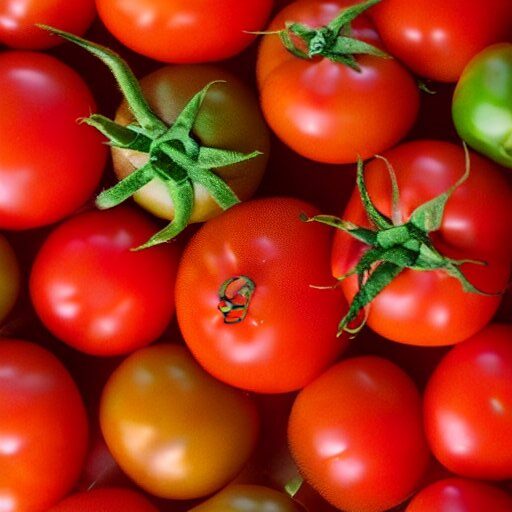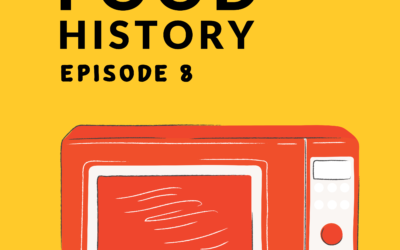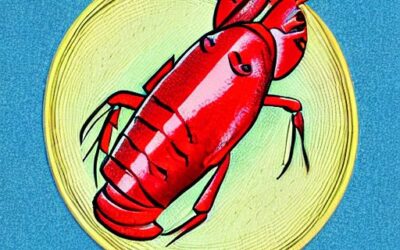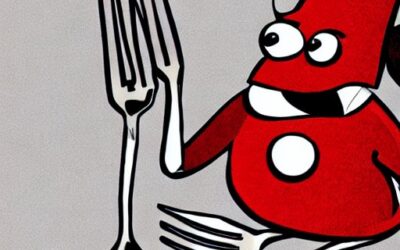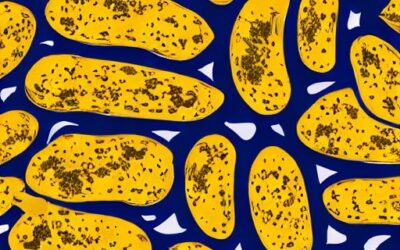New World Order: Colonialism on the Modern Western Diet
Tomatoes used to be something scary; many Italians feared tomatoes believing they were poisonous. People were killed because they ate tomatoes, especially women. Yes. It sounds absurd nowadays. But the success of the tomato was a turbulent journey that took over 300 years.
In Germany, there is the saying, “What the farmer doesn’t know, he won’t eat.” During the 15th century, many foods came to Europe as immigrants.
Christopher Columbus and his crew set sail west in August 1492. He hoped to get his hands on gold and spices in America. When he returned to Europe, his clients, the Spanish kings, were disappointed. Instead of gold and spices, Columbus returned with seeds, grains, tubers, and dried leaves from these four journeys.
His crew ate cooked potatoes on the way back to Europe, which saved them from scurvy. What looked so unimpressive would turn out to be crucial. These ingredients would shape Europe’s eating habits for decades to come.
This is what historians call the Great Columbian Exchange. For the first time in history, potato and tomato plants ventured beyond the Americas.
While both of these vegetables are now a basic ingredient of our diets, they didn’t have such a warm welcome in Europe. People were (and still are) easily suspicious of unknown foods. The reasoning is just different. Back in the day novel foods were often associated with witchcraft and poison. But fortunately, not everything was lost. Eventually, people came around, so let’s find out why.

You say tomato; I say scarecrow
In 1544 Pietro Andrea Mattioli, an Italian Renaissance doctor and botanist created a recipe that couldn’t sound more ordinary to us today: tomatoes with olive oil, salt, and pepper.
Half a century after Columbus had set sail to America few people knew about tomatoes, and they were likely not eaten very often. It took more than 300 years for the tomato to become a staple in Italy and even longer in Northern Europe.
There were a few reasons for this. The first tomatoes were a small yellow fruit, they looked very similar to the fruit of mandrakes. Mandrake is part of the nightshade family and is poisonous. Therefore, tomatoes were considered inedible or even poisonous for a long time, since they look almost identical. Unfortunately, the continent-wide witch hunt in Europe didn’t help.
At this time, a theory was taking off: witches had begun to use broomsticks to fly. Some people were tasked to hunt witches. These “official witch hunters” were trying to find out what gave witches the ability to fly.
It seemed sensible that witches smear some ointment on their brooms and themselves that gives them the ability. That ointment would also give witches the power to turn into animals, especially werewolves.
Witch hunters back in the days circled in on the following ingredients: Hemlock, deadly nightshade, henbane, and mandrake. They do sound like witchy ingredients. So here comes the issue for our tomatoes: The tomato is not just related to the deadly nightshade but all the last four plants.
Henbane is sometimes called “stinky nightshade” and is, of course, poisonous. Mandrakes, the ones that look like cherry tomatoes are also hallucination-inducing.
Deadly, stinky, and hallucination-inducing – the tomato plant has some weird siblings in its family. So no wonder that during the 16th and 17th centuries, tomatoes were a no-no in many parts of Europe.
But the Italians had seen the tomato’s potential earlier. At that time, it had already found its way into some national dishes. Affectionately called “Pomodoro”, or golden apple.
How tomatoes became an exotic extravaganza
In 1548, the Tuscan Grand Duke, Cosimo de Medici, received a basket full of tomatoes. They were probably planted in his garden as an exotic extravaganza. The Medici family was very interested in the New World’s exotic plants and the possible use of tomatoes. As word spread of the exotic fruit, the humble tomato started gaining popularity.
From the 16th to the 17th century, tomatoes were planted as rarities in gardens of the wealthy. Because at the end of the day human psychology is simple. What is rare is valuable. So, the rare tomatoes symbolized prosperity and were used to impress visitors.
By the middle of the 18th century, the tomato had conquered the Italian upper class. The Italian monk Vicenzo Corrado wrote a cookbook (“Il Cuoco Galante”) in 1773, in which tomatoes are paired with meat, fish, and eggs.
Tomatoes began to play an important role in many meatless dishes that were prescribed by the church on certain days.
Over 100 years later, at the end of the 19th century, a baker from Naples created a recipe that would have lasting implications for carb-lovers to this day. The Italian king and his wife, called Margherita, were visiting the city, and so the baker covered his dough in the three colors of the still-young nation: green (basil), white (mozzarella), and red (tomato), calling his creation after the king’s wife.
Heinz Ketchup bringing tomatoes to America
Around the same time, the tomato returned to the American continent from Europe. In Pennsylvania, German immigrant Henry John Heinz used them as the basis for his successful product, which he called Ketchup after a similar Chinese word for fish sauce.
Those two dishes: pizza, and ketchup, swept away the last concerns and made tomatoes one of the most sought-after vegetables in the western world.
Their power remains today, and around 180 million tons of tomatoes are grown worldwide.
How tomatoes became products of technology
The past centuries of interacting with humans left their mark on the tomato. To raise all of the tomatoes that are needed today and to make sure demand is met all year round, we use pesticides and fertilizers, irrigation systems and heated glass houses, ethylen for ripening and various methods for preservation. And we have changed the very core of the tomato itself – its DNA.
The first of the many changes to follow took place when tomatoes were cultivated by Aztec farmers in Middle America. The wild Andean tomatoes had small fruit with only two compartments, like the modern cherry tomato. But then, a mutation must have taken place which produced larger, ribbed fruit with more compartments. As this variation of the original plant was preferred by the Aztecs and cultivated in their gardens, the first tomato variety was created by the preferences of human eaters.
Tomatoes continued to be subject to selective forces. When tomatoes were introduced to Mediterranean Europe by the Spanish, they took only a small number of all the existing varieties with them. From those varieties, the self-pollinating ones produced the most fruit, because the tomatoes´ insect pollinators had been left behind in the New World. Tomato growers likely chose the seed of the plants with the most abundant fruit and so, mostly the self-pollinating varieties thrived and were re-imported to the place that would become the United States of America.
After tomatoes had become popular in the United States in the 19th century, farmers cultivated more and more tomatoes to meet the growing demand. But as all of them brought their crops to market at harvest time, prices for the fruits were in free fall around that time of the year. Only those farmers who managed to get their tomatoes to market early secured high prices. And only those who managed to avoid losses during transportation earned high revenues. So 19th-century seed growers started to breed specifically for tomatoes with those two qualities: early ripening and resistance to damages caused by shipment on a boat or train. In the 1850s, a Dr. T.J. Hand crossed large ripped tomatoes with small smooth-skinned cherry tomatoes and ended up with a large, smooth, durable tomato that looked very similar to the varieties which are still the most popular today. The demands of growing urban markets and new transportation methods such as trains and steamships had influenced the genetics of the tomato. Food canning was about to make an impact, too (by the way, there is a whole episode on canned food coming up, so stay tuned).
Canneries first emerged in the U.S. in the 1920s and the industry grew when the Gold Rush and Civil War led to a rise in demand for portable and imperishable food. Canners took advantage of the fact that most tomatoes were delivered to the market almost simultaneously and bought up the leftovers for peanuts. But they were soon to realize that although the surplus market tomatoes were cheap, they didn’t exactly fit their needs. Some of them ripened unevenly and those with rips created too much waste when peeled. Varieties with too many seeds as well as yellow or purple tomatoes didn´t look appetizing in the can. Tomato breeders reacted promptly and developed varieties adopted especially to the canners´ needs: Those tomatoes were smoother, redder and meatier than their predecessors and increased the output that canneries could get from each tomato bushel significantly. And canneries contracted farmers to grow varieties just for canning, encouraging them to grow larger and larger fields with only one type of tomato.
There are numerous other examples of how technological advances and cultural developments influenced and changed the biology of the good old tomato. Monocultures that developed as a reaction to the canneries and other food manufacturers´ needs, led to the creation of disease-resistant, high-yielding varieties. The introduction of mechanical harvesting in the early 1940s made fruits with thick skin resistant to cracking and bruising a necessity. By the 1980s, Genetic Engineering had taken the process of creating new tomato varieties with certain desired traits to a whole new level. A tomato with an extended shelf life, trademarked with the name Flavr Savr, was even the first genetically modified food to enter American supermarkets.
Nowadays, tomato varieties are countless: Numbers vary, but there are estimated to be between 10.000 and 25.000 varieties of tomatoes, of which about 3000 are in active cultivation.
Lessons for the future of food
As you know, I cannot help myself but apply these lessons to alternative proteins cellular agriculture, or cell-based meat. Unknown foods can have unknown health implications. It’s important for people to feel secure that they are not the guinea pig of a new experiment.
However, real safety and the perception of safety are two rather different criteria and sometimes not even related. Even though driving tends to be more dangerous than flying, most people are more afraid of going by plane than going by car. It’s all about the ‘perception’ of safety.
And one way to create the perception of safety is to normalize a certain behavior.
For example, by creating recipes and popular products using the ingredients, pizza and Ketchup were crucial to convince people of the safety and deliciousness of tomatoes.
And they also teach people HOW to use food. Novel foods may also require different cooking techniques. It’s different to fry a plant-based burger than an animal-based one, it just is. And with it comes some necessary consumer education.
So, partnering with chefs, cooking shows, and cooking educators is a great way to cover both:
To normalize a certain food and teach people how to cook it.
I hope you enjoyed this episode on the history of tomatoes.
Sources:
Carter A. J. (2003). Myths and mandrakes. Journal of the Royal Society of Medicine, 96(3), 144–147. https://doi.org/10.1258/jrsm.96.3.144
Schmeling, I. (2019) Hier kommen die Neuen! In: Spiegel Geschichte 1/2019.
Jacomet, S.: Die Geschichte der Tomate. Institut für Prähistorische und Naturwissenschaftliche Archäologie, Universität Basel, 2011
Key, N.C. (Host): Tomatoes were blamed for witchcraft & werewolves (No. 19). Audio podcast episode, 19.09.2020. In: The fantastic history of food. Spotify.
Nunn, N., & Qian, N. (2010). The Columbian Exchange: A History of Disease, Food, and Ideas. The Journal of Economic Perspectives, 24(2), 163–188. http://www.jstor.org/stable/25703506
Ann Vileisis: Are tomatoes natural?, in: Martin Reuss/Stephen Cutcliffe
(Hrsg.): The Illusory Boundary. Environment and Technology in History,
Charlottesville 2010, S. 211-248.


